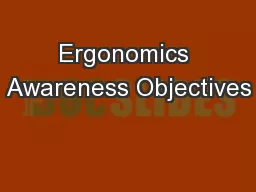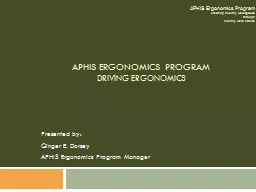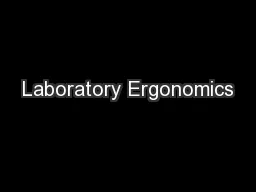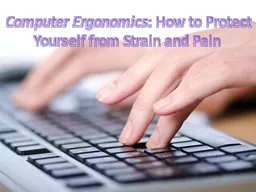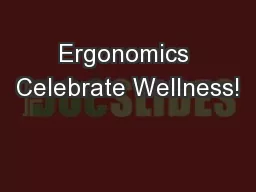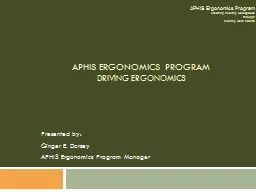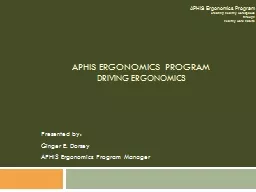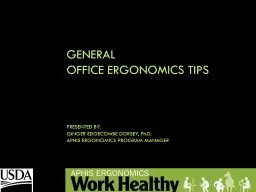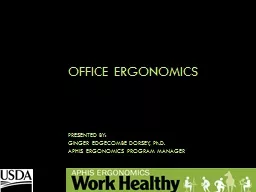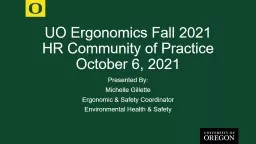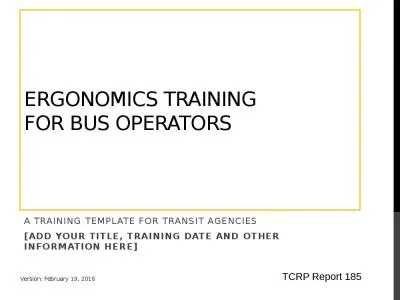PPT-Ergonomics Awareness Objectives
Author : luanne-stotts | Published Date : 2018-11-01
In this course we will discuss the following Definition of ergonomics Workplace problems injuries and losses due to ergonomic issues Types signs and symptoms and
Presentation Embed Code
Download Presentation
Download Presentation The PPT/PDF document "Ergonomics Awareness Objectives" is the property of its rightful owner. Permission is granted to download and print the materials on this website for personal, non-commercial use only, and to display it on your personal computer provided you do not modify the materials and that you retain all copyright notices contained in the materials. By downloading content from our website, you accept the terms of this agreement.
Ergonomics Awareness Objectives: Transcript
Download Rules Of Document
"Ergonomics Awareness Objectives"The content belongs to its owner. You may download and print it for personal use, without modification, and keep all copyright notices. By downloading, you agree to these terms.
Related Documents

